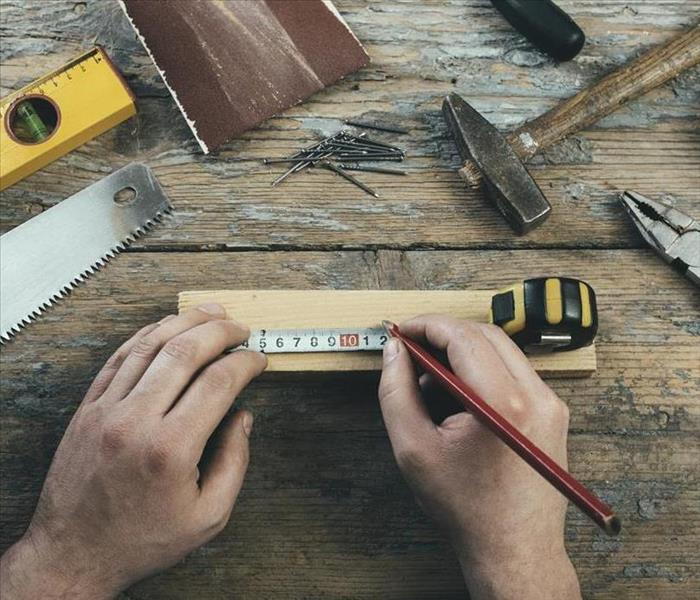Storm Restoration Frequently Asked Questions
2/23/2022 (Permalink)
Are you confused by terms such as "tear out" or "restoration?" If so, you are not alone. Fortunately, most homeowners don't deal with flood damage regularly. These are some of the most commonly asked questions about the restoration process.
Storm Restoration FAQ
If you are dealing with water damage and you aren't quite sure what is going on with the restoration, the answers to these questions may help.
1. What Should Be My Priority When I Can Start Restoring My Home?
Your top priority is getting your home and contents dried out. The longer your home stays wet, the more damage you will have from rot, corrosion and mold. Aim to dry out your home within 24 to 48 hours. Trying to dry a flooded home by yourself is a big job, so you may want to contact a flood restoration company in Greenville, NC, to assist you.
2. Does Bleach Kill Mold?
Mold is a common problem in homes that have been flooded. Bleach can kill some types of mold, but it doesn't prevent regrowth and it may miss mold spores that are under the surface.
If you have small areas of mold, attempting to clean them yourself may work, but for large mold problems, you may want to call a mold remediation company.
3. How Can I Prevent Mold?
The main defense against mold is to clean and dry as much of your property as quickly as you can. You may also need to discard materials that can not be effectively cleaned and dried. Many restorations begin with a tear out that removes drywall, carpet and insulation up to the flood line. These materials can not be restored and removing them makes it easier to access other areas that need to be cleaned and dried.
Removing wet materials from your home also reduces the moisture level, which can help lower the risk of mold. Wet contents that can not be cleaned should be thrown out. Contents that can be restored should be moved outside to dry.
Increasing ventilation in the home by opening doors and windows and running fans may also help.
4. Do I Need To Have My Termite Treatment Done Again?
Soil treatments are usually not water-soluble and should still be in place unless the soil where they were applied has washed away or been covered by mud or silt. If you are using termite bait stations, the saturated material inside the stations must be replaced. While your walls are accessible, it may be a good time to inspect them for hidden termite damage and moisture control issues.
It may also be an ideal time to apply a penetrating borate treatment to structural wood to protect against termites and decay.
5. Do I Need To Replace Exterior Sheathing?
Sheathing is the material attached to the exterior side of wall studs. Different types of sheathing respond to flooding differently. Plywood usually recovers from flood damage well. Most other materials are not flood resistant.
Hopefully, once you get your home restored you will never need to use the phrase "tear out," again. However, if you do, you are now armed with the knowledge you need.




 24/7 Emergency Service
24/7 Emergency Service
